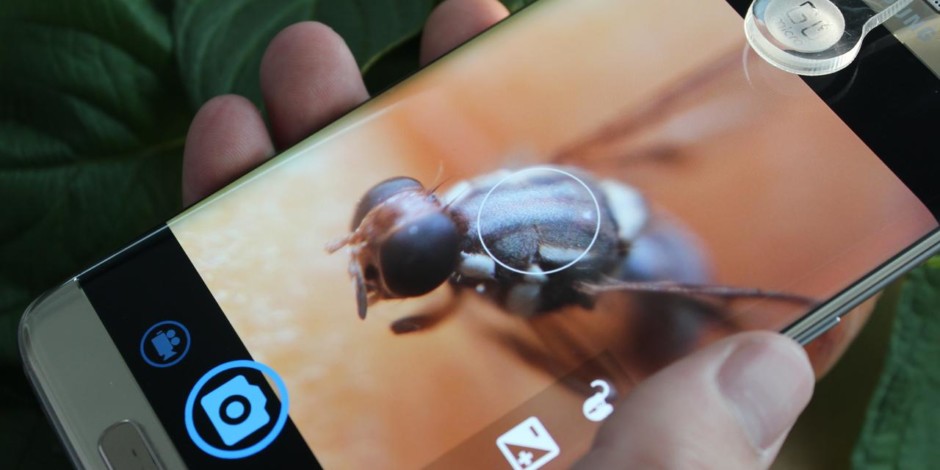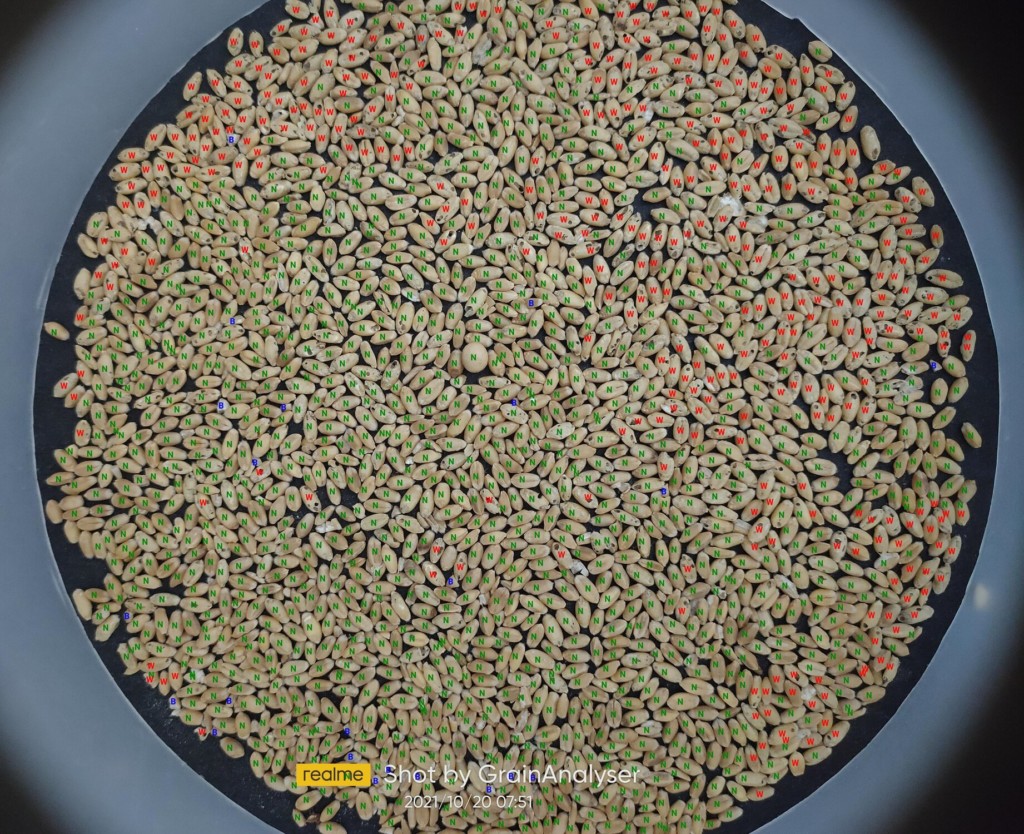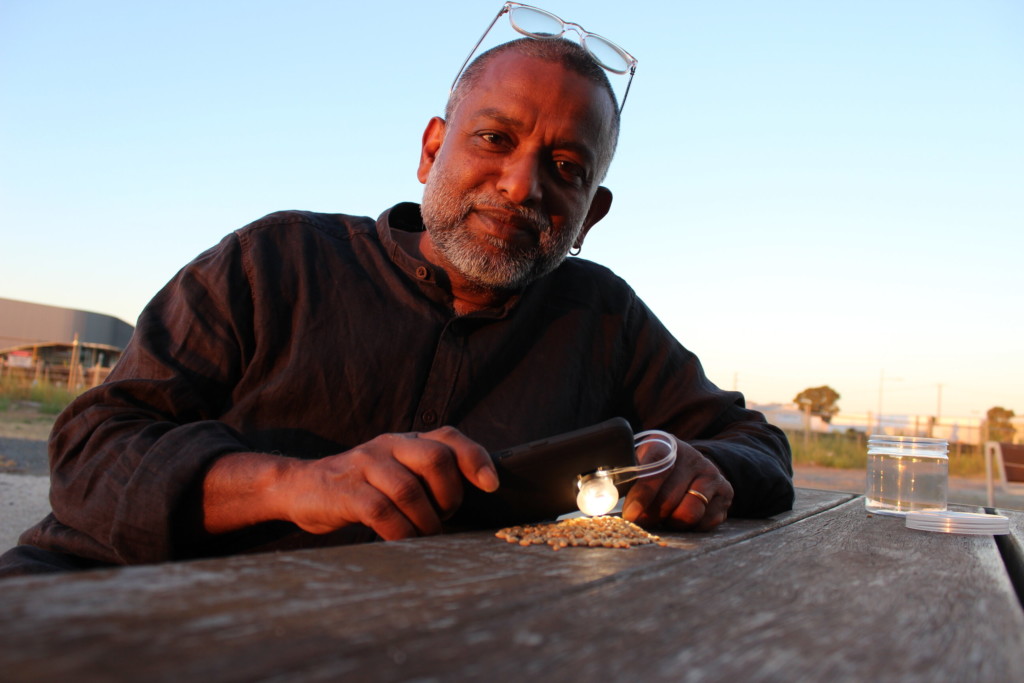Cutting-edge AI plant disease detection set to transform the global food chain
South Australian agritech startup GoMicro uses a combination of simple and sophisticated technologies, including microscopic attachments and blockchain, to rethink quality assessment standards and access to agronomist advice. Now the startup is raising pre-seed funding.

Thomas Edison found 1,000 ways not to make a lightbulb; likewise, engineer-by-training Sivam Krish has found a plethora of ways to apply microscope technology to smartphones, with bright potential. After combining microscope attachments and smartphones to explore skin cancer detection, identify fruit flies in South Australia, and teach young STEM students to explore the scientific world, Sivam landed on GoMicro: an AI-assessment platform that can classify produce, detect issues and connect producers and buyers. Sivam believes it will democratise the production food chain.
“We’ve now gone beyond what humans can do with the eye. We can look at an eye of the fish or the skin or the gills, and we’re about 90% accurate in terms of when the fish was caught. We’re able to look at the wheat and say what variety it is. And we can also do moisture assessment. These are going past what human expertise can do,” says Sivam.
GoMicro is tackling global food loss and food waste head on, rethinking the way quality is assessed, disrupting the current “inefficient” system, and reducing quality-related issues (and the resulting spoilage).
Global ambitions and worldwide reach
The GoMicro technology is currently used in supermarket chains in Sri Lanka to detect tuna spoilage; for grain assessment in India, in partnership with Grain Analyser; for detection of all varieties of ocean fish freshness in India; for pomegranates in Peru; for pest detection in cane-growing ventures in Pakistan; and for corn in Indonesia. It’s also in preliminary trials for grain variety assessment in Australia, and grain and legume assessment in partnership with UPL in Africa. Almost all are under paid beta agreements, with commercial terms under discussion. GoMicro also has an ongoing relationship with Bayer.
“In the natural world, every product is meant to be different,” says Sivam. “You can’t have quality standards in natural products. It’s all subjective. If you have a way of measuring quality in a way that is universally accepted, then the seller can see the same standards as the buyer. We are going to build a platform for buyers to set standards and for sellers to market a product to those standards. The moment you incorporate quality into blockchain, the game changes.”
GoMicro offers both hardware and software, with an affordable and easily produced phone attachment (a version of which Sivam hopes to sell globally for $1) and an AI-driven classification technology and quality assessment tool. Available to any farmer, the microscope attachment can be used on any smartphone to assess their own produce, and can also be used by buyers to assess the quality of produce upon receipt. An individual can take images – far fewer than conventional AI training – using the hardware attachment and feed it into the software.

Streamlining deep learning with better images
“People assume that AI is about data. What they don’t realise is that they are collecting junk data. More junk data does not improve the accuracy,” says Sivam. GoMicro’s breakthrough came when placing fruit flies within ping pong balls to photograph them.
“Instead of 50,000 to 60,000 images, we were able to get to 80% accuracy with just 50 images. We redid the experiment; yeah, it was true. We did something that nobody else has done. We had removed the background and shadows,” says Sivam. “The reason why AI requires thousands and thousands of images is because you have 1,000s of backgrounds. When you remove that, you have spectacular accuracy. And that makes us the most accurate AI detection system in the world for plant disease.”
In addition to GoMicro’s application as a pest and disease detection and quality assessment tool, Sivam also sees it as a quality platform, with plans to embed GoMicro Quality Assessment Certificates within the blockchain ecosystem.
Fairness for all: Setting standards from the ground up
“We want the device to be in everybody’s hands. Then we have companies create their own standards. So we are now seeing ourselves as an AI assessment service company,” he says. “All anybody needs to do is put some grain on a table, take a few shots with that device, and the standard is created. What that means is a buyer can say, ‘this is what I want’, the rest is completely unnecessary. Anybody in the system can grade according to those standards.”
Unlike flatbed scanners that run produce through a conveyor belt, the GoMicro device can assess with a smaller pool and under less rigid conditions, catching problems earlier in the supply chain.

“[On the flatbed scanners,] you have to arrange the grain so they don’t touch each other. It’s an expensive, slow process. I believe we can outperform [flatbed scanners] with a $3 device and a smartphone. It will solve India’s grain assessment problem.”
Grain and fish are the core focus for the immediate future, Sivam says. Over the past three months, Sivam and the team at India-based Grain Analyser have collaborated to validate grain quality assessment. The GoMicro team are also working on a grain variety detection application (distinguishing between grain varieties Vixen, Yitpi, RockStar and Scepter) for use at the first point of sale of grain. For this use, the classification technology is paired with a made-for-purpose device with an imaging attachment, designed and created by GoMicro. It is currently operating at 96% accuracy for those grains.
It’s anticipated that by 2025 there will be over 18 billion mobile phones in the world. Using them to directly connect agricultural producers and buyers via blockchain technology, Sivam believes, will change the ecosystem.
“We think it’s going to disrupt the grain industry, for sure, and then the agrifood industry. We are planning to do the same with fish and seafood, and fruit and vegetables as well,” he says. “This is a revolutionary way of doing quality.”
GoMicro is currently raising pre-seed funding from “investors who believe in our vision, and believe it’s possible to make quality assessment ubiquitous using smartphones and AI”.
Learn more about this commercial opportunity here.
Enjoyed this story? Want to learn more about the Asia Pacific region’s innovative agrifood tech ecosystem? Sign up for our newsletter here and receive fresh stories about global leaders, farmers, startups and innovators driving collaborative change.
